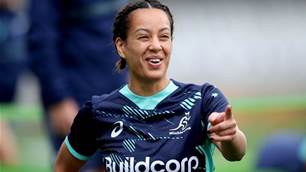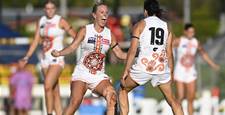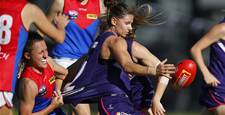Women’s rugby in this country has progressed rapidly over the last few years and Rugby Australia should be commended for going on the front foot in ensuring our elite women’s players have ample opportunity to shine at domestic and international level.
Meanwhile, our players could only look on enviously at the unlimited resources (and a few rugby league players who were enticed across by large sums of money) being thrown at the men’s game, as our Wallabies became runners-up at the 2003 Rugby World Cup.
At that time all semi-finalists and world cup champions have come from those nations, besides Australia’s exceptional performance in qualifying for the semi-finals and third place finish in 2010.
Finally, with the International Rugby Board pushing for rugby’s inclusion at the Olympics, it was finally seen that gender equity was important, as the IOC mantra save for a few established sports, was and still is the inclusion of both genders’ participation for sports at the Olympic Games.
As a result, funding and the high performance programme for the Wallaroos were brought back in 2005, but it wasn’t until 2009 when it all fell into place with our original Aussie Pearls winning the inaugural (2009) Sevens Rugby World Cup.
On the back of that success, our Wallaroos had their best ever finish with third place at the 2010 fifteen-a-side Rugby World Cup.
Key members of those squads included captain Cheryl Soon, 2009 IRB Rugby Personality (player) of the Year Debbie Hodgkinson, Alexandra Hargreaves, Tui Ormsby, Ruan Sims, Selena Worsley, Tobin Mcgann, Shelley Matcham and at the time, a young Nicole Beck and Sharni Williams before they went onto win Rio Olympic gold.
Fast forward to 2018 and Rugby Australia announced its Super W competition and for the first time in history, our fifteen-a-side players are on level terms with the traditional powerhouses of international rugby.
Those who follow rugby league have all seen how the Jillaroos went from being perennial bridesmaids in rugby league to back-to-back world champions, all due to the pathways programme being introduced at state level in NSW, coupled with the NRL taking control and preparing the national team for international competition with the best coaches and facilities money could provide.
The five team Super W competition will have access to better training facilities and some of the best coaches in the land will help female players hone their game at the elite level and this will have a flow on effect for the national team.
Related Articles

NSW banking on winning experience to go back-to-back

Code battles continue! Wallaroo joins West Coast Eagles













